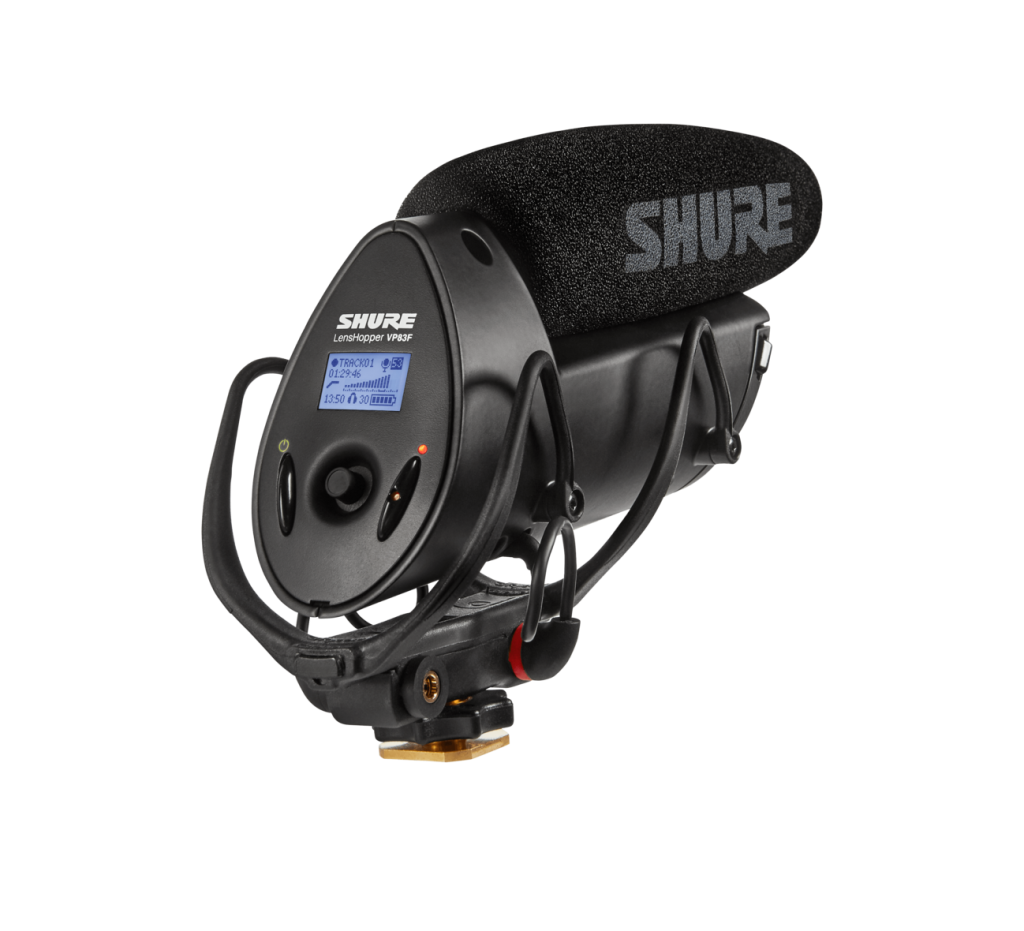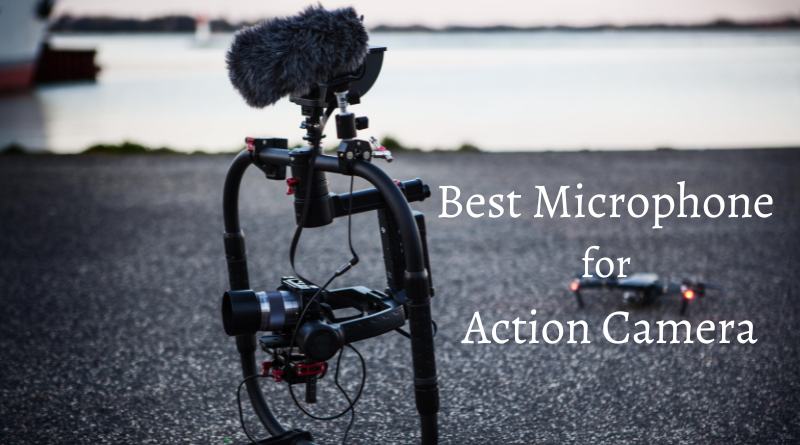7 Best Microphone for Action Camera – Complete Review
Table of Contents
Video production is not just about capturing high-quality video footage, but also about having excellent audio quality. In fact, poor audio can be a major distraction to viewers and can affect the overall quality of the video.
Action cameras have become increasingly popular for capturing adventure and action footage. They are small, lightweight, and can be easily mounted on helmets, bikes, or other equipment. However, one of the limitations of action cameras is their audio recording capabilities. They are often equipped with built-in microphones that can pick up a lot of wind noise, handling noise, and other unwanted sounds.
To overcome this limitation, it is essential to choose the right microphone for your action camera. A microphone that is specifically designed for action cameras can significantly improve the quality of your audio recordings, making your videos more engaging and enjoyable to watch.
There are different types of microphones suitable for action cameras, including directional microphones, shotgun microphones, stereo microphones, and portable digital recorders. Each type of microphone has its advantages and disadvantages, and the choice will depend on the specific needs of the user and the type of action being captured.
Choosing the right microphone for your action camera is crucial for achieving the best audio quality. In the following sections, we will discuss the different types of microphones available for action cameras, their features, and their advantages and disadvantages. We will also provide tips on how to use a microphone with an action camera and techniques for reducing unwanted noise and wind interference.
Types of microphones for action cameras
There are several types of microphones suitable for action cameras, each with its own unique features and benefits. Here are the most common types of microphones for action cameras:
Directional Microphones
Directional microphones, also known as cardioid microphones, are designed to pick up sound from a specific direction. They are perfect for recording dialogue or other sounds from a specific subject. Directional microphones are small and lightweight, making them ideal for use with action cameras. They also have a relatively low sensitivity to noise and are relatively inexpensive. However, they do not work well in noisy or windy environments.
Shotgun Microphones
Shotgun microphones are highly directional and are designed to pick up sound from a narrow area in front of the microphone. They are ideal for use in noisy or windy environments and are commonly used in film and video production. Shotgun microphones are often larger and heavier than directional microphones, making them less portable.
Stereo Microphones
Stereo microphones are designed to capture sound in stereo, providing a more immersive and natural listening experience. They are perfect for capturing ambient sounds, such as nature sounds or crowds. Stereo microphones are relatively small and lightweight, making them ideal for use with action cameras.
Portable Digital Recorders
Portable digital recorders are standalone devices that can be used to record audio independently from the camera. They are highly portable and can provide excellent sound quality. They are ideal for capturing high-quality audio in challenging environments or situations where the camera cannot be used.
When choosing a microphone for your action camera, there are several factors to consider, including the type of action you will be filming, the environment you will be in, and the sound quality you are looking for. You should also consider the compatibility of the microphone with your action camera, as well as its durability and portability. Ultimately, the best microphone for your action camera will depend on your specific needs and preferences.
Top 7 microphone for action camera
Here are the top 7 microphones for action cameras along with their features, pros, cons, and price:
Rode VideoMicro

- Feature/Specification: Compact cardioid microphone designed to improve audio quality for video recordings. It comes with a shock mount and a furry windshield to reduce wind noise.
- Pros: Affordable, compact and lightweight, easy to use, plug-and-play design, high-quality audio, compatible with most cameras.
- Cons: Sensitive to handling noise, not suitable for noisy environments.
- Price: $59 USD
Sennheiser MKE 400

- Feature/Specification: Shotgun microphone designed for use with cameras and camcorders. It features a compact and lightweight design, shock mount, and switchable sensitivity.
- Pros: High-quality audio, robust and durable, compatible with most cameras, easy to use, low noise level.
- Cons: Expensive, not suitable for windy environments.
- Price: $199 USD
Shure VP83F

- Feature/Specification: Shotgun microphone with built-in digital signal processing and a digital recorder. It features a compact and lightweight design, shock mount, and intuitive user interface.
- Pros: High-quality audio, robust and durable, built-in recorder, easy to use, low noise level.
- Cons: Expensive, not suitable for windy environments.
- Price: $299 USD
Sony ECM-XYST1M

- Feature/Specification: Stereo microphone designed for use with cameras and camcorders. It features a compact and lightweight design, shock mount, and switchable recording modes.
- Pros: High-quality audio, compatible with most cameras, easy to use, low noise level.
- Cons: Expensive, not suitable for windy environments, limited frequency response.
- Price: $159 USD
Zoom H1n Handy Recorder

- Feature/Specification: Portable digital recorder with built-in stereo microphones. It features a compact and lightweight design, easy-to-use interface, and high-quality audio recording.
- Pros: Versatile, can be used independently from the camera, high-quality audio, easy to use, low noise level.
- Cons: Not designed specifically for use with action cameras, can be bulky when mounted on the camera.
- Price: $119 USD
Rode VideoMic Pro+

- Feature/Specification: Shotgun microphone with built-in digital signal processing and a rechargeable battery. It features a compact and lightweight design, shock mount, and intuitive user interface.
- Pros: High-quality audio, built-in rechargeable battery, robust and durable, built-in recorder, easy to use, low noise level.
- Cons: Expensive, not suitable for windy environments.
- Price: $299 USD
Tascam DR-10L

- Feature/Specification: Portable digital recorder with a lavalier microphone. It features a compact and lightweight design, easy-to-use interface, and high-quality audio recording.
- Pros: Versatile, can be used independently from the camera, high-quality audio, easy to use, low noise level
- Cons: Expensive, not suitable for windy environments, limited frequency response.
- Price: $250 USD
How to use a microphone with an action camera
Once you have chosen the right microphone for your action camera, the next step is to learn how to use it effectively. Here are some tips for using a microphone with an action camera:
Connecting the microphone to your action camera
Depending on the type of microphone you have, you may need to connect it to your camera using a cable or a wireless connection. Some microphones are designed to plug directly into the audio input of the camera, while others require an adapter. Always follow the manufacturer’s instructions for connecting the microphone to your action camera.
Placing the microphone
The placement of the microphone is critical for capturing clear audio. Ideally, the microphone should be as close to the sound source as possible. For example, if you are recording dialogue, the microphone should be placed close to the speaker’s mouth. If you are recording ambient sounds, such as nature sounds, the microphone should be placed in a position where it can capture the sounds without picking up too much background noise.
Reducing unwanted noise and wind interference
One of the biggest challenges when recording audio with an action camera is unwanted noise and wind interference. To reduce these issues, consider using a windscreen or a foam cover for your microphone. Additionally, you may want to position the microphone in a way that it is shielded from the wind. It’s also important to avoid handling the camera or the microphone while recording, as this can create unwanted noise.
Monitoring the audio
It’s essential to monitor the audio while recording to ensure that you are capturing high-quality sound. Some microphones come with a built-in monitoring system, while others may require you to use headphones. Make sure to test the audio levels before you start recording and adjust them accordingly.
Final Words
Audio quality is a critical aspect of video production, and choosing the right microphone for your action camera can make a significant difference in the overall quality of your videos. With a wide range of microphones available, it’s essential to consider your specific needs and preferences when making a selection. Proper placement and techniques for reducing unwanted noise and wind interference can also make a significant difference in the quality of your audio recordings. By following these tips and using the right microphone, you can capture high-quality audio that complements the stunning visuals captured by your action camera, resulting in impactful and engaging videos.
